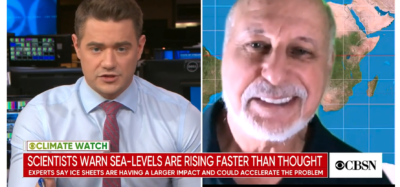2020: Burned, Melted, Flooded, and Dead

“Twenty-twenty” used to communicate having good vision, referring to visual acuity on an eye chart. For decades to come, the phrase will more likely recall the year just ending: 2020, with the globe-changing impact of Covid-19, disease and death.
At present, the related economic problems and political chaos are also strong associations of 2020 but both those will likely fade within the decade. Record-breaking heat, hellacious fires, melting ice caps, and flooding will not be as distinct and correlated to the particular year as the Covid-19 pandemic, yet those attributes will linger longer… far longer.
At the human level, nothing can compete with the death of loved ones or those in our community. By midnight on December 31, some 350,000 Americans will be dead due to Covid-19, a substantial one in a thousand, or a tenth of a percent of the entire U.S. population. Globally, deaths are approaching two million. Before the vaccines have been fully implemented next year, it’s projected that both numbers could increase by half again, possibly even double. Yet we struggle to grasp the impact.
I’m very fortunate that no one I knew personally died from Covid-19. My closest encounter was a long-time and close friend Bill Gleason who had an extremely severe case, but thankfully had a full recovery. Since he happens to be the publisher of my forthcoming book (Moving to Higher Ground: Rising Sea Level and the Path Forward) we have had several conversations about how people perceive threats and warnings…and what it takes for humanity to change course. There are no easy answers of course, but retrospection is powerful.
What can we learn at the planetary level as we look back on 2020 that will give us some sense of the future.
Yesterday (December 28) “Watching Earth Burn” was the top featured OpEd in the New York Times, which I find really innovative and compelling. Using a series of high-resolution satellite images from the past year Michael Benson documents and explains how the planet is visibly changing in real time. He focuses on the visual evidence from vast forests that were destroyed by wildfires. Led by California, Oregon, Washington, and Alaska in the U.S. and internationally by China, Brazil, India, and Siberia (Russia) tens of millions of acres burned. Hundreds of humans and millions of animals perished. Notably in Australia many species may have been made extinct. With the notable exception of Brazil where the President encouraged the slash and burn, all the others were a function of the warmer temperatures and global heating now associated with climate change, or global warming — though both those terms are too benign. Increasingly climate crisis and climate emergency are favored, for good reason.
Another item caught my eye yesterday — this one from the UK office of a global charity and humanitarian organization, Christian Aid. With stunning clarity, their headline was:
“Climate change – it’s now or never.Climate change is the single greatest threat to humanity in our lifetime. They write:We tend to hover around the facts, vaguely outlining the impact on far away communities, doing our bit to recycle, eat less meat or use our cars less. We try not to talk to friends and family about it in case we’re accused of being too self-righteous. It’s true that the facts can be scary, overwhelming, paralyzing. But the reality is that this century has already seen 17 of the 18 hottest years on record; annually since 2008, climate-related disasters has displaced 22 million people across the world; climate change could push an extra 50 million people into hunger by 2050; Flooding from China to India – thousands dead; billions destroyed; global flooding could triple by 2030.”
Because of Covid-19 and the various restrictions and lockdowns, there was a reduction of 7% in greenhouse gas emissions. Yet it was just a slow down; Earth still warmed, just by a lesser amount. President-elect Biden promises to make climate change a top priority. While I applaud and wish he and his team well, let’s not be naive. Whether one likes the metaphor of a tractor trailer truck, supertanker, or runaway train, it takes time to slow down and change course.
While it’s too soon to know if it breaks all records, 2020 will be one of the warmest years since global records began in 1880. Ice at both poles is melting at record rates. That yields subtle but serious increases to global sea level and flooding. The amounts are best measured over a decade to smooth out distortions, but the early readings indicate a surge in sea level, by some indications a full inch last year, an increase of four times the average for the decade. The recent launch of the newest satellite to measure global sea level will aid the precision and continuity of record, helping us to better evaluate sea level rise and its acceleration.
 Even from our current vantage, I have little doubt that by mid century, sea level will be noticeably and significantly higher. Low-lying coastal areas worldwide will flood more frequently. The lowest will be permanently submerged. In my blog post a week ago, I cited a new scientific paper, that I co-authored in the journal One Earth -“Twenty-first century sea-level rise could exceed IPCC projections for strong warming futures.” It described the reasons that sea level rise this century could be much higher than the usual projections. CBS News interviewed me about the study and featured the segment. Frankly I was somewhat surprised that such a report was even noticed given the priorities of holidays, politics, and personal issues related to Covid-19.
Even from our current vantage, I have little doubt that by mid century, sea level will be noticeably and significantly higher. Low-lying coastal areas worldwide will flood more frequently. The lowest will be permanently submerged. In my blog post a week ago, I cited a new scientific paper, that I co-authored in the journal One Earth -“Twenty-first century sea-level rise could exceed IPCC projections for strong warming futures.” It described the reasons that sea level rise this century could be much higher than the usual projections. CBS News interviewed me about the study and featured the segment. Frankly I was somewhat surprised that such a report was even noticed given the priorities of holidays, politics, and personal issues related to Covid-19.By the year 2050, on our current path of warming, we face much worse devastation with all the perils in my headline above. As we leave the disasters of 2020, let’s resolve to get educated and to educate others. The effects are a clear and present danger. The trend is clearly worse for the generations that follow us. We owe it to them and for our legacy to slow the warming as the highest priority and to begin adaptation without delay. One thing the year 2020 can do, is to provide “20/20” clarity about the risks and the need to prepare. We just need to open our eyes.
Best wishes for the New Year to all !
